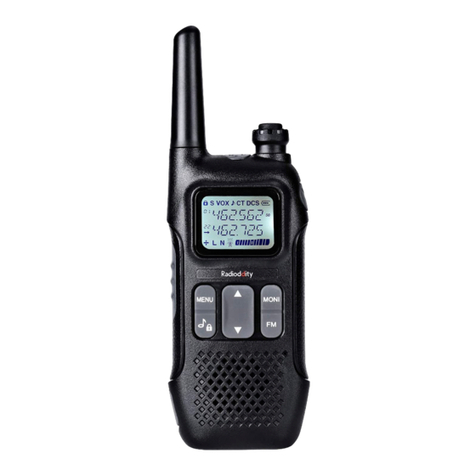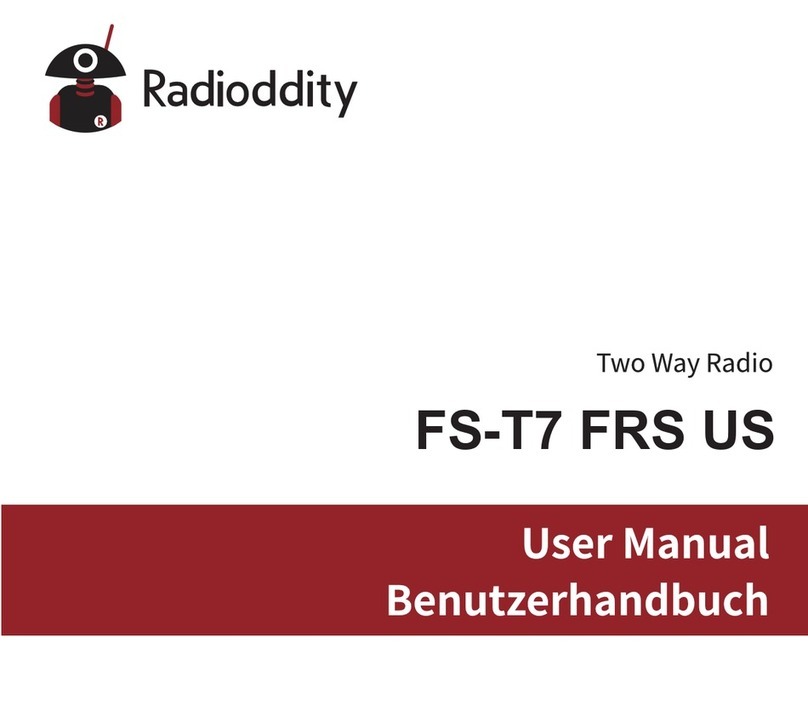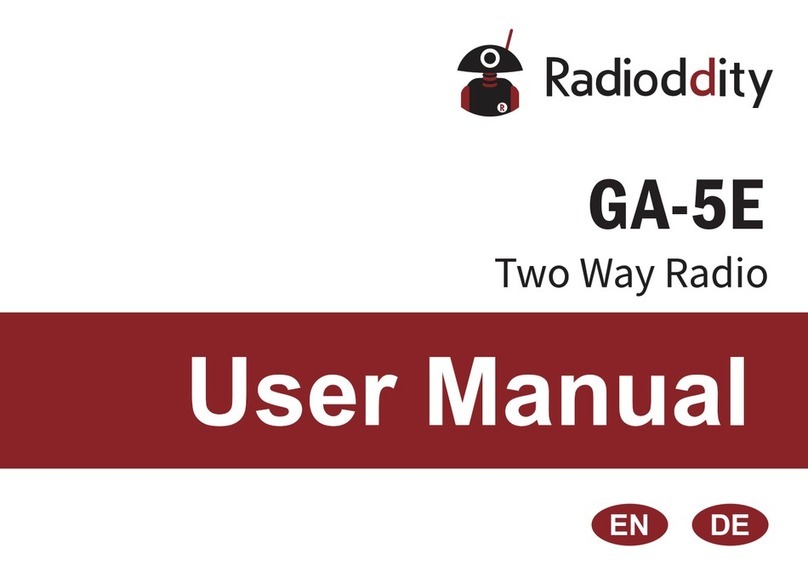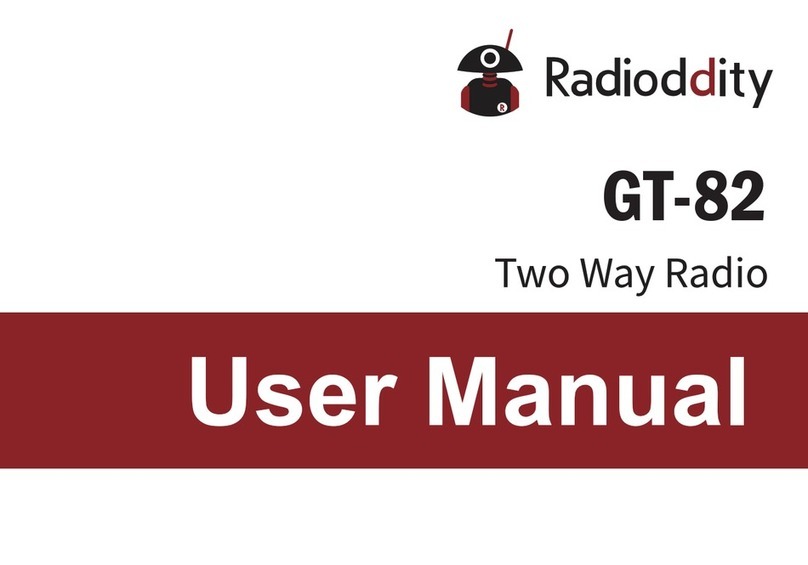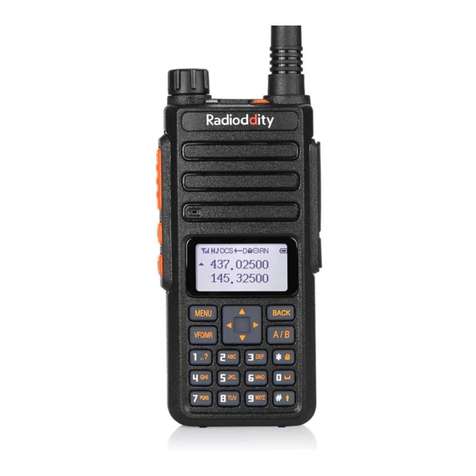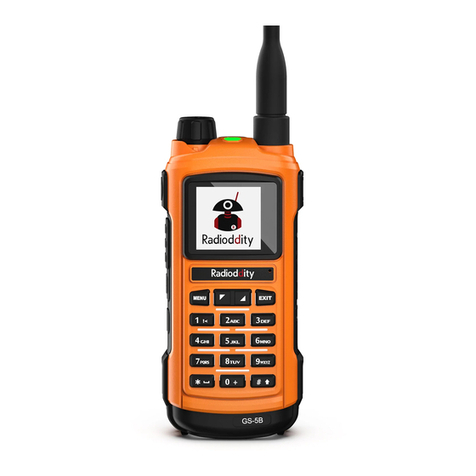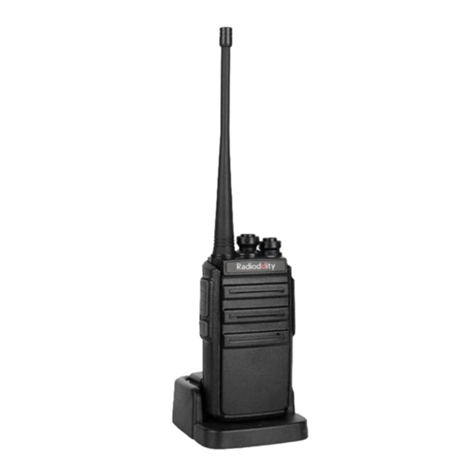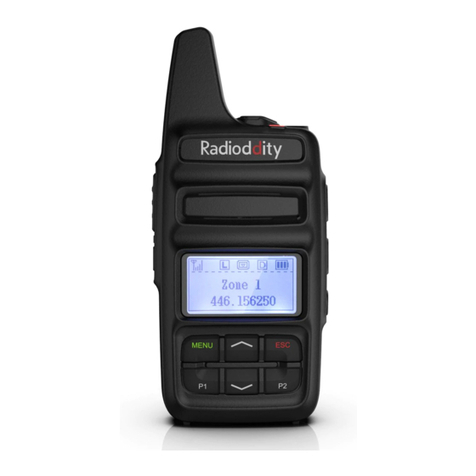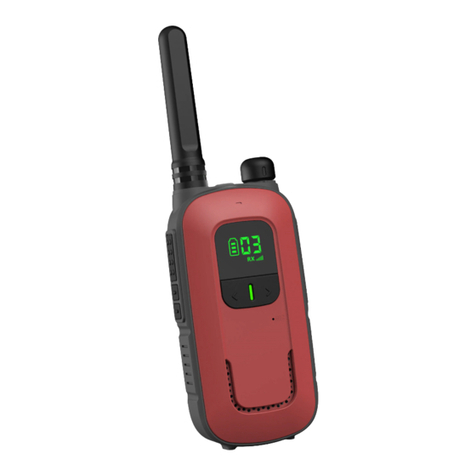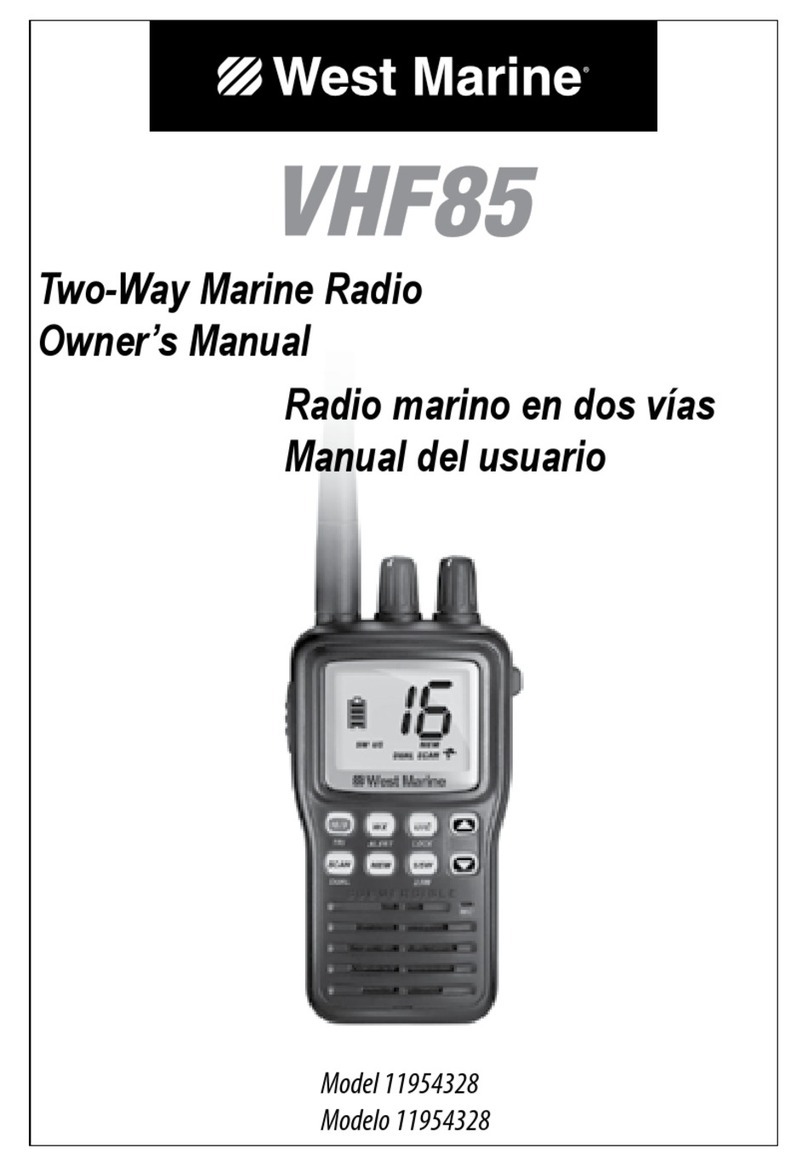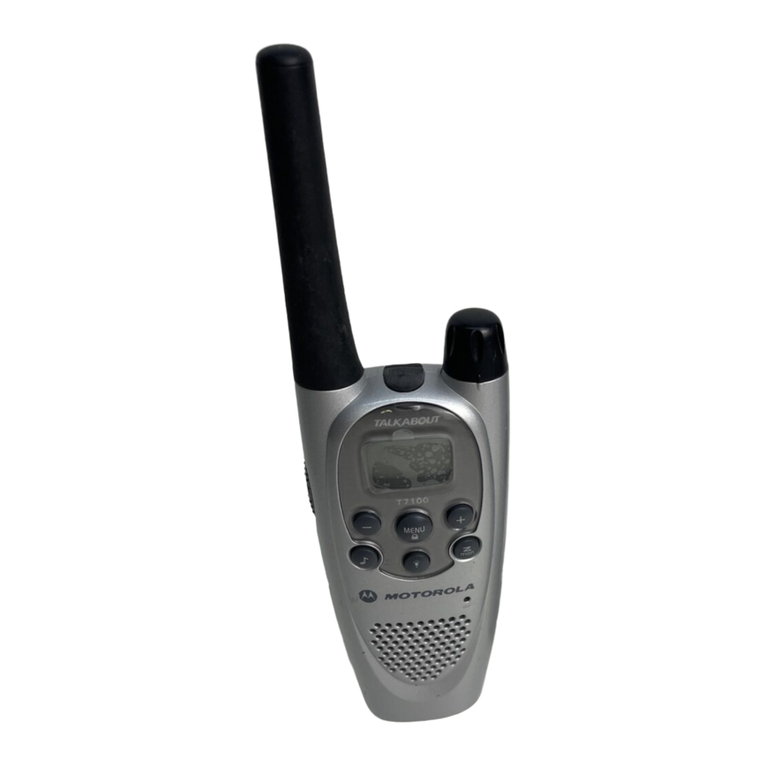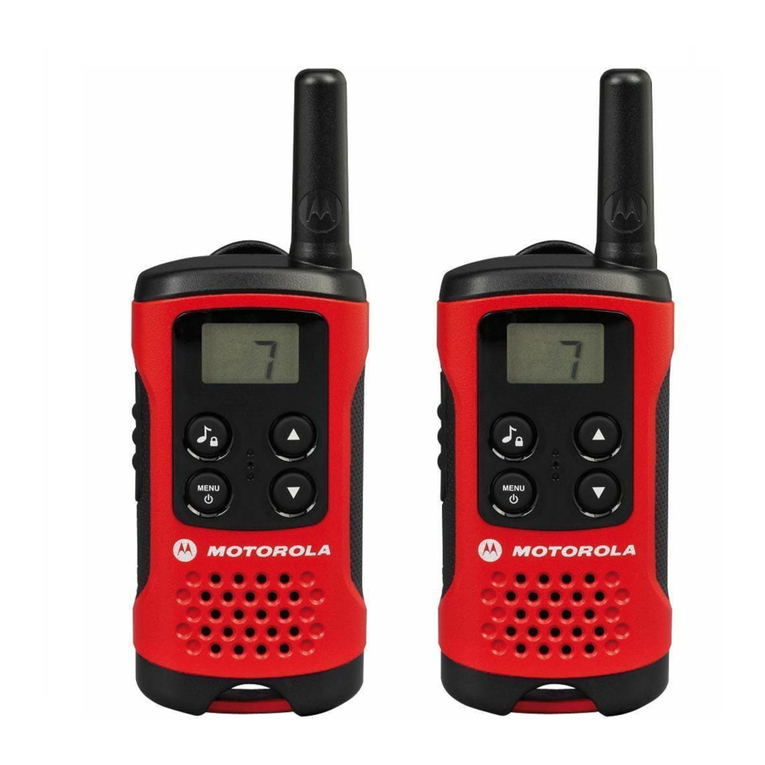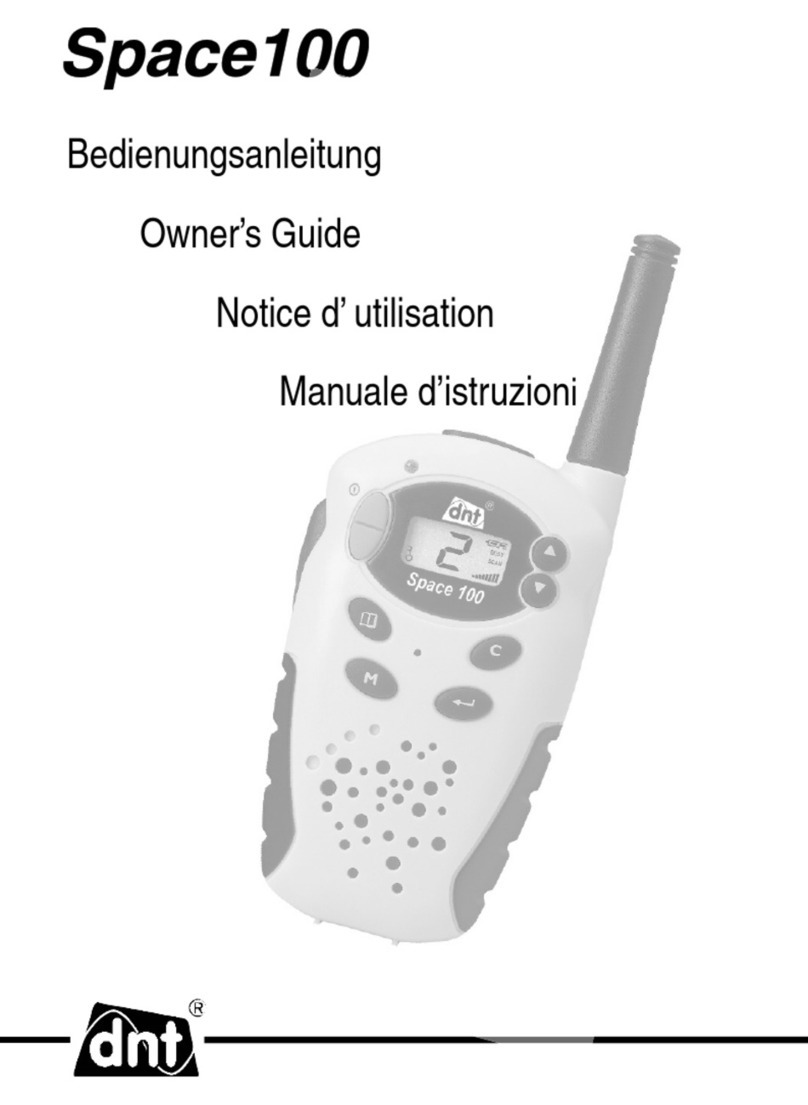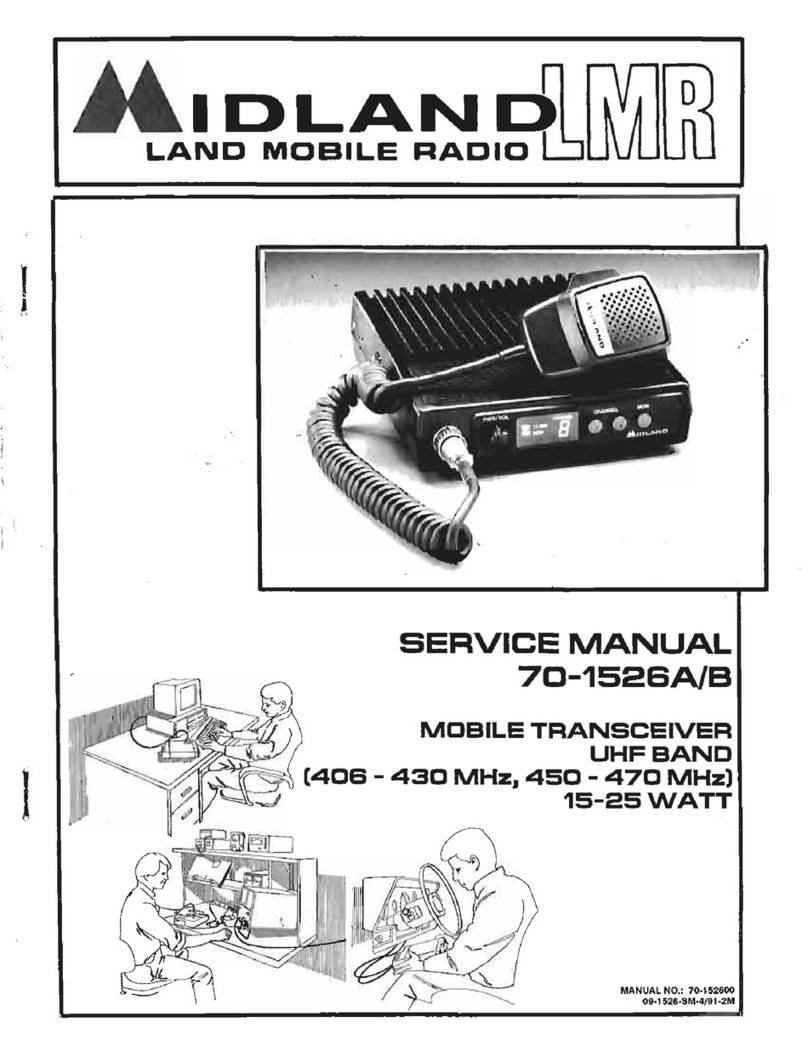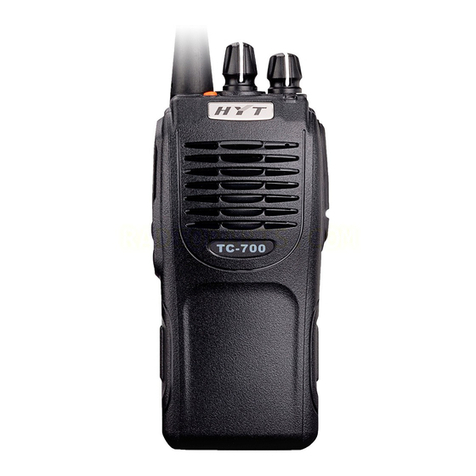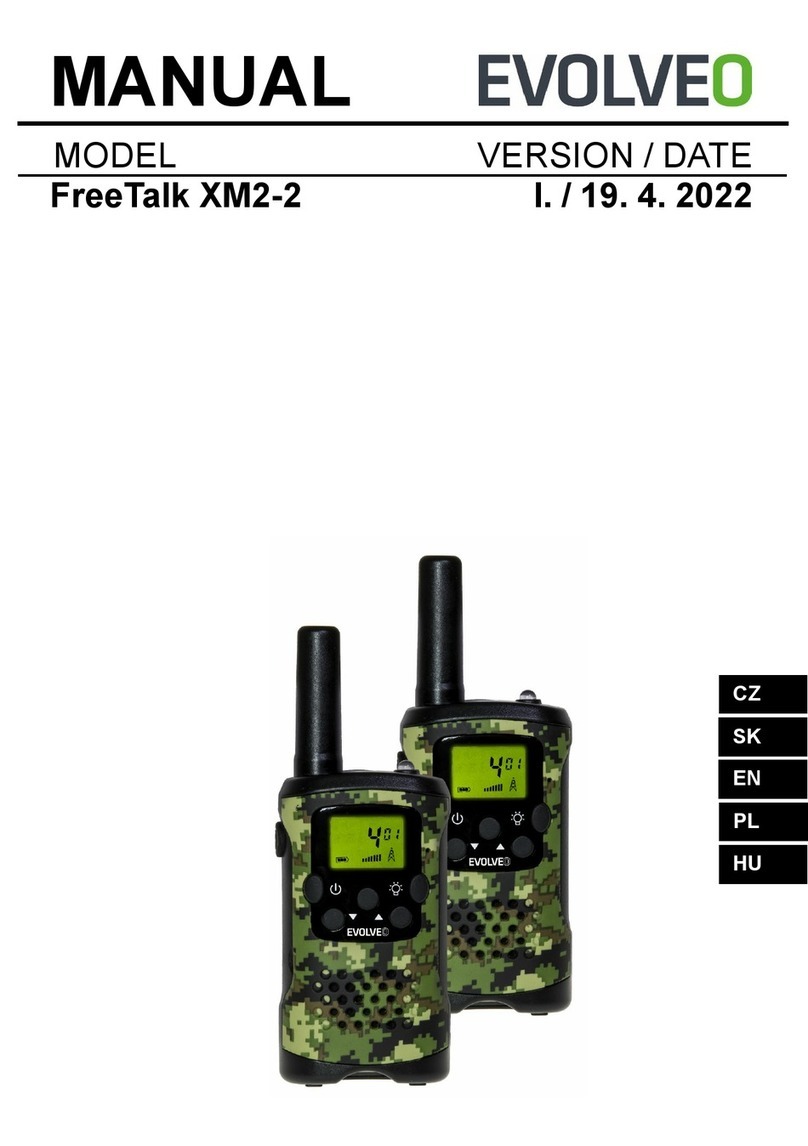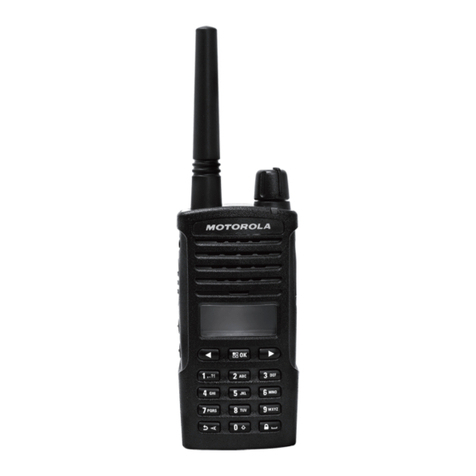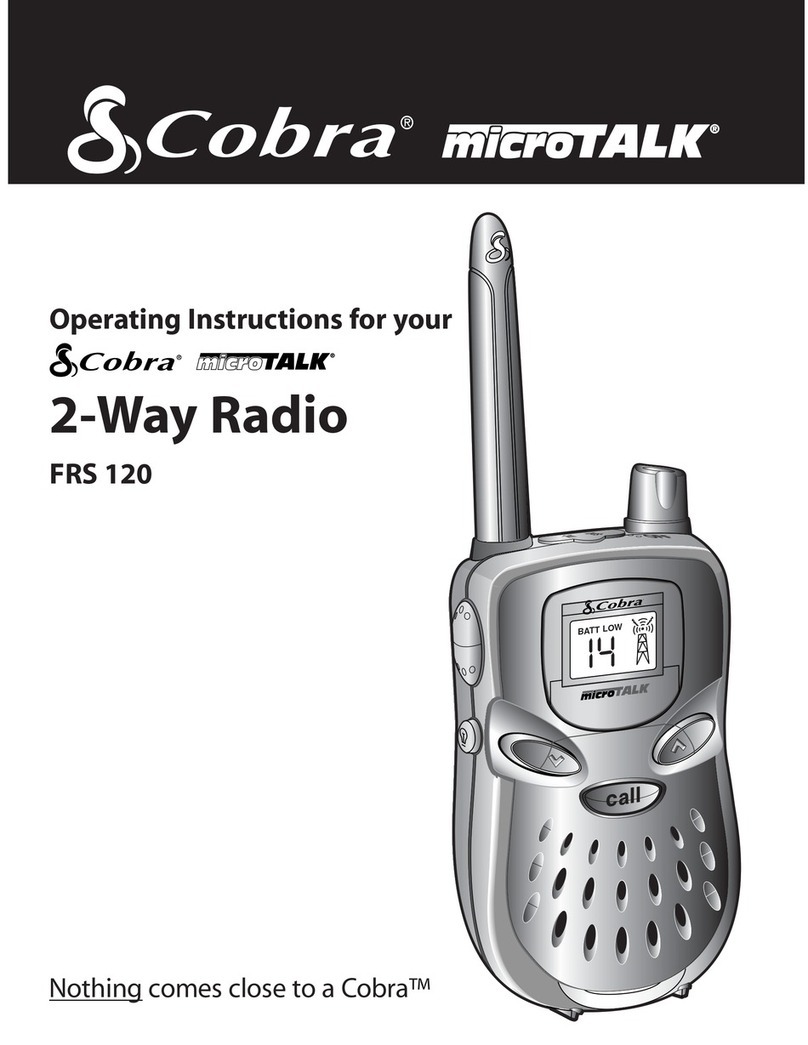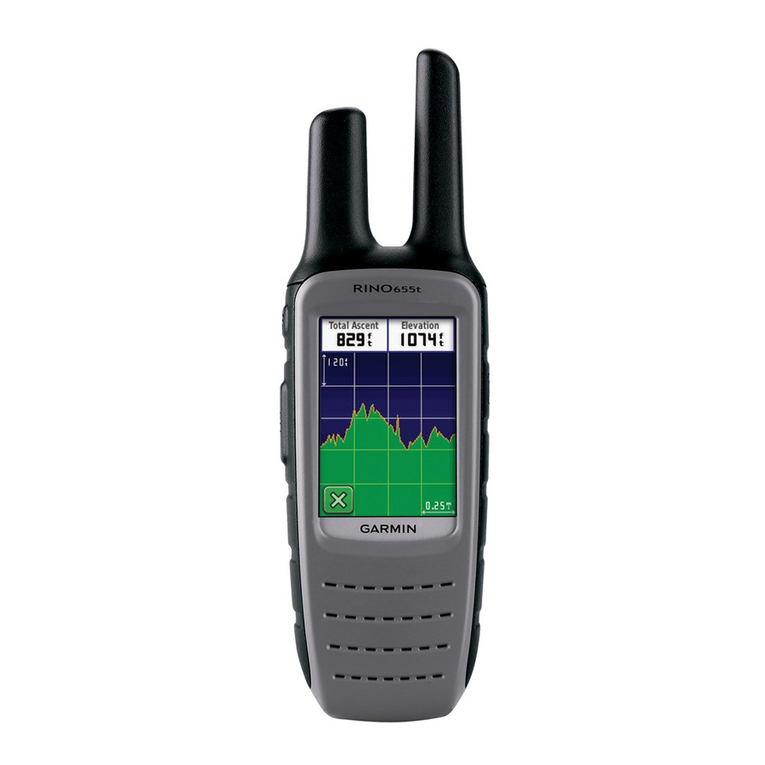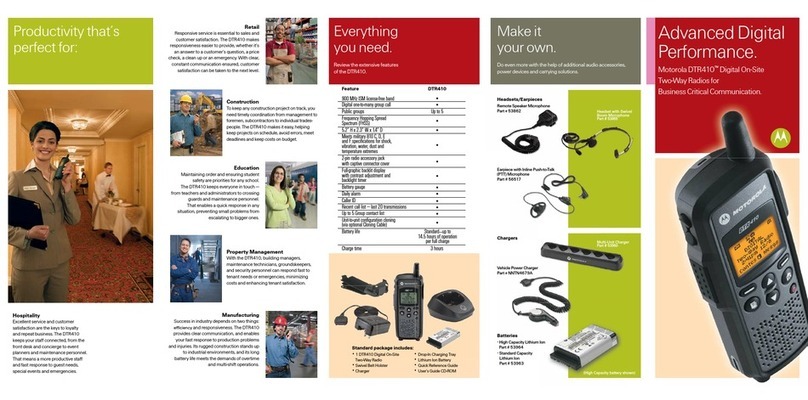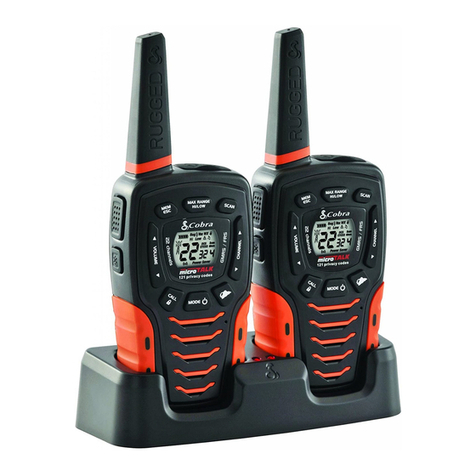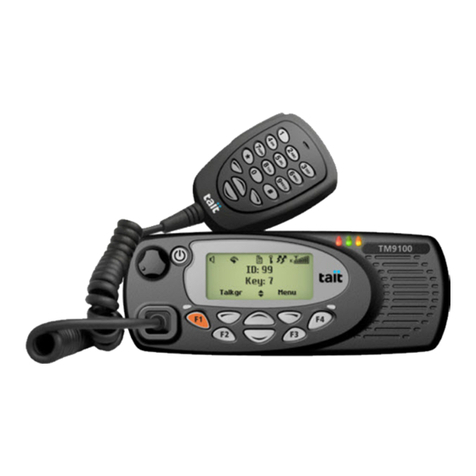
2
Frequency Chart
Ch. Freq. (MHz) Ch. Freq. (MHz) Ch. Freq. (MHz) Ch. Freq. (MHz)
1 446.00625 5 446.05625 9 446.10625 13 446.15625
2 446.01875 6 446.06875 10 446.11875 14 446.16875
3 446.03125 7 446.08125 11 446.13125 15 446.18125
4 446.04375 8 446.09375 12 446.14375 16 446.19375
Main features
• 16 PMR446 Channels • Output power: ч0.5W
• 2 Channels Watch • Sub-Codes Scan and Store
• Channel Monitor • Channel Scan Function
• 155 Sub-Codes (50 CTCSS codes/ 105 DCS codes) • 10 Selectable Call Tone Alerts
• Hands-Free Operation (VOX) • Call Alert
• Roger Beep Tone • Keypad Lock
• Battery Level Meter • Emergency Strobe Light
• Battery/Power Saver • Backlit LCD Display
• Low Battery Audible Alert • TOT (Time out timer)
*Range may vary depending on environmental and/or topographical conditions.
Recharging the Li-Ion battery pack ‘LB-T22’
Place your transceiver in the desktop charger cradle or connect the wall adapter to the correct socket on the radio.
Recharge of the Li-Ion battery is managed by a radio processor and the battery status can be checked by the icon
on the screen and by seeing it on the desktop charger:
• Charging status is indicated by the LED on the desktop charger and by the flashing battery icon on the radio
display.
• When charging is complete, the led will be off and the battery icon on the
screen will be full of bars
Recharge NI-MH Batteries (3 x AA, Optional)
Place your transceiver in the desktop charger cradle or connect the wall
adapter to the correct socket on the radio. A full charge takes about 5 hours.
We suggest you detach the wall adapter from the radio or remove the radio
from the desktop charger cradle after 5 hours.
The battery icon on the radio display will flash during the entire charging
